robertahegy
Moderator/Tech Counselor
Really looks like you found the answer to this problem, Allen!! Congrats and all the best in your business endeavors.
Roberta


Roberta
So far we have only done 68 of these, but it is building momentum every day. We did 7 today and everyone says they love the way they work and the shaking is gone. Thanks, Allan
Really looks like you found the answer to this problem, Allen!! Roberta
Allan,
You did such a great job with your video showing why the Anti-Splat was needed, how it worked, and how well it corrected the problem. Do you have similar information regarding this wheel bearing product?
thanks,
brian
I wish the bracket were opened a little more so it would slip onto the gear without a struggle. I also was unable to insert the bent bolt through to the other side as it didn't have enough bend and was too large for the hole to manuever easily. There must be a better way to close this thing down.
I found the same -- bent bolt and spacer are useless. I used two LARGE C clamps to close the clamp, one at each end, until the clamp met the brace at both sides; then the bolts went right in, starting with the middle bolt. Too easy.
.So I just got around to installing my Anti Splat nose gear fairing. I found that mine doesn't extend far enough towards the wheel for the hose clamp to grab. There just isn't enough meat there for the hose clamp to grab onto...it keeps slipping off. When you compare it next to the stock Van's fairing, you can really see the difference. I haven't tried to extend it by laying fiberglass yet.
Has anybody else experienced this or am I just lucky?
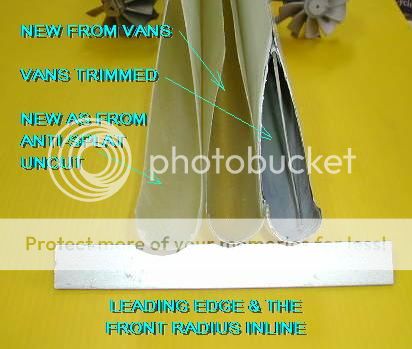
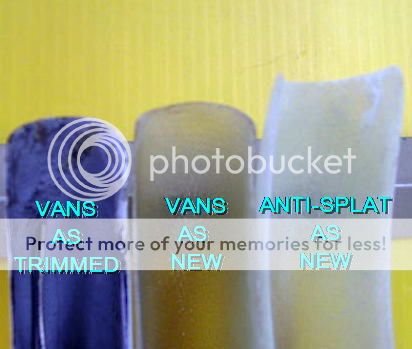
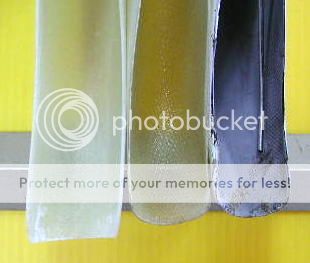
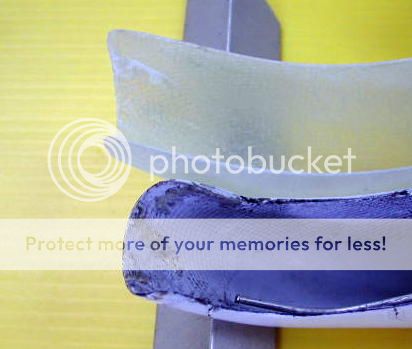
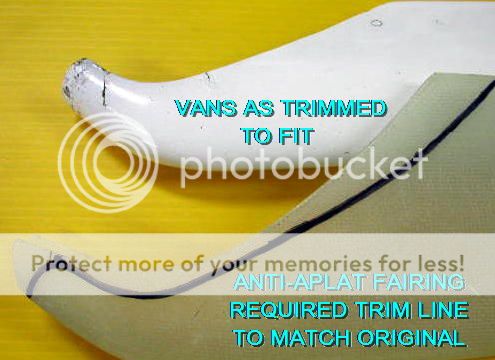
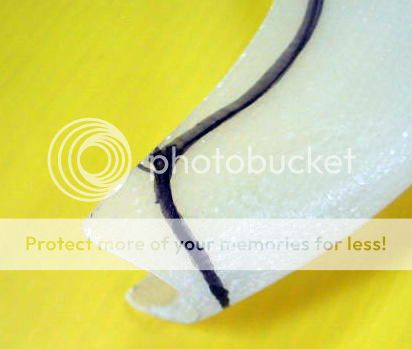
Hmmm, I only trimmed at the top of the fairing (near the engine mount) not at the bottom. I don't remember trimming the Vans fairing to clear the nose wheel pant but I could be wrong.
I'm out of town until next week. I'll be in touch then with some photos.
Thanks.
Couldn't agree more. Good R+D done on these products. Excellent company to work with,who knows it may become standard on the A- models . Thanks Al for sending the second LIp Skid up to Canada at no-charge. Dave
Wow, there must be an interesting story with this!!
http://cgi.ebay.com/ebaymotors/2007...?pt=Motors_Aircraft&hash=item1e718e0523#v4-42
The important take on this failure, is where the NLG failed. It failed way up the leg, whereas before they were typicaly failing just above the NLG bearing point. This NLG was subjected to some incredible forces. The anti-splat device did what it was supposed to do.
The important take on this failure, is where the NLG failed. It failed way up the leg, whereas before they were typicaly failing just above the NLG bearing point. This NLG was subjected to some incredible forces. The anti-splat device did what it was supposed to do.
When Mike Kullenberg started this thread in October 2011 he was an early adopter of the Anti-splat Nose Job and a very keen convert. I will quote him from the first post:
"I think it is likely the best thing yet to happen to the A models, and I would highly recommend to all of you that you get this piece of mechanical insurance."
I think it would be very valuable if he could now follow up with first hand information on the events that led to the failure of his RV9A nose gear so that we do not have to resort to speculation based on photos of the wreck.
The Gear Brace totally did what is was designed to do. Wow... some real incredible forces for sure. The brace looks to be fully intact on the gear leg from what I can see.
I hope that this is properly documented for the Anti-Splat maker. It is hard to evaluate what may have happened from the available photos but it does appear that the forward portion of the nose wheel pant was destroyed.
It also appears that the nut area of the nose wheel fork may be in a position to contact the ground.
If both of these statements are factual....and he was on grass/dirt....it appears that you have the same scenario that leads to a tipover without the device.
So it is possible that the device had ZERO impact in preventing the tipover in this case.
If the pilot ever comments on it, is it correct that he was able to slide the canopy aft to get out? It looks like the tall vertical stabilizer may have kept the slider from contacting the ground.
From the ad: "ORIGINALLY FITTED WITH AN O-360 AND CONSTANT SPEED PROP"
So it is possible that the device had ZERO impact in preventing the tipover in this case.

Wow, there must be an interesting story with this!!
http://cgi.ebay.com/ebaymotors/2007...?pt=Motors_Aircraft&hash=item1e718e0523#v4-42
The important take on this failure, is where the NLG failed. It failed way up the leg, whereas before they were typicaly failing just above the NLG bearing point. This NLG was subjected to some incredible forces. The anti-splat device did what it was supposed to do.
The ebay ad says it had a nose wheel landing. Most aircraft would have a hard time with that.
The Ebay ad was posted by the agent selling the wreck. He probably knows about as much of what actually happened as you and I. He sees the nose strut buckled and calls it a "nose wheel landing". Hopefully in the next few days Mike Kullenberg might end the intrigue with a statement.
Wow. I know places on the OregonTrail that are smoother than that. I've found that a brush hog works better on anthills than a propeller.I have run over several ant hills, through small depressions, and farm equipment tracks, and other non smooth stuff.
OK, I am the guy that did the nose over. This will be my only post on this subject, as I have moved on to a different airplane, and no longer look at this forum.
First I will say the the Anti-Splat did EXACTLY what it was supposed to do, but nothing was going to keep the airplane right side up in this circumstance.
I had recently extended the runway about 400 feet, and there was a transition area between the old part with good grass and the new section that still had an uneven ground cover. It had rained two days previously. My inspection of the runway before departure did not indicate any discernible issues. The incident landing was normal in every way until the nose wheel crossed over into the new section at no more than 5 to 10 mph. I felt the airplane decelerate rapidly, and then very slowly it started to rotate over. I briefly even thought that the airplane might come back down on the gear, but no such luck. I will always believe that the Anti-Splat slowed the rate at which it went over, thus giving me a much less injurious ride. I think that is evidenced by how little damage was done to the cowl, wings, and the tail group. The only part of the airplane that suffered was the canopy and the roll bar structure, but there it bent stuff in an expensive way.
The nose wheel had dug a furrow into the soft dirt about 4 to 5 feet long getting deeper the entire way until the ditch was about 6 inches deep. The nose wheel stopped right there and over it went. I'm not so sure that a 172 or Cherokee would not have ripped off or severely bent the nose gear in the same situation. The true downside of the Vans nose gear is the spring steel. It is a great spring.
The end game is that I was OK, pride wounded and a bit sore, but otherwise OK. The insurance company decided after some repair quotes that we should total it. I agreed, and started looking for another one (taildragger only). I could not find one I liked or could afford, so now I have a Maule.
I looked at the ad on eBay, and do not believe that Wentworth has a good handle on the damage. They have never personally seen the airplane to my knowledge, and it is still in Cheraw where the recovery team took it. All I will say is that it will not be as simple to repair as their ad indicates. BTW it was an Titan IO-360 with a CS prop, and the weight and balance was within Vans parameters. When I was in it (big guy) the airplane was exactly in the center of the cg range. Since then I have finished grading and grassing the remainder of the strip, and now it would not be a problem.
Bottom line is that ANY airplane can be damaged if the nose wheel gets buried. I do not (nor should anyone on this forum) blame the Anti-Splat for any part in this. In fact it probably saved me from some more serious injury.
Future dialog on nosegear "issues" as well as Anti-Splat dialog should refer back to what you have posted.
All with nosegear should take to heart what you have shared.
